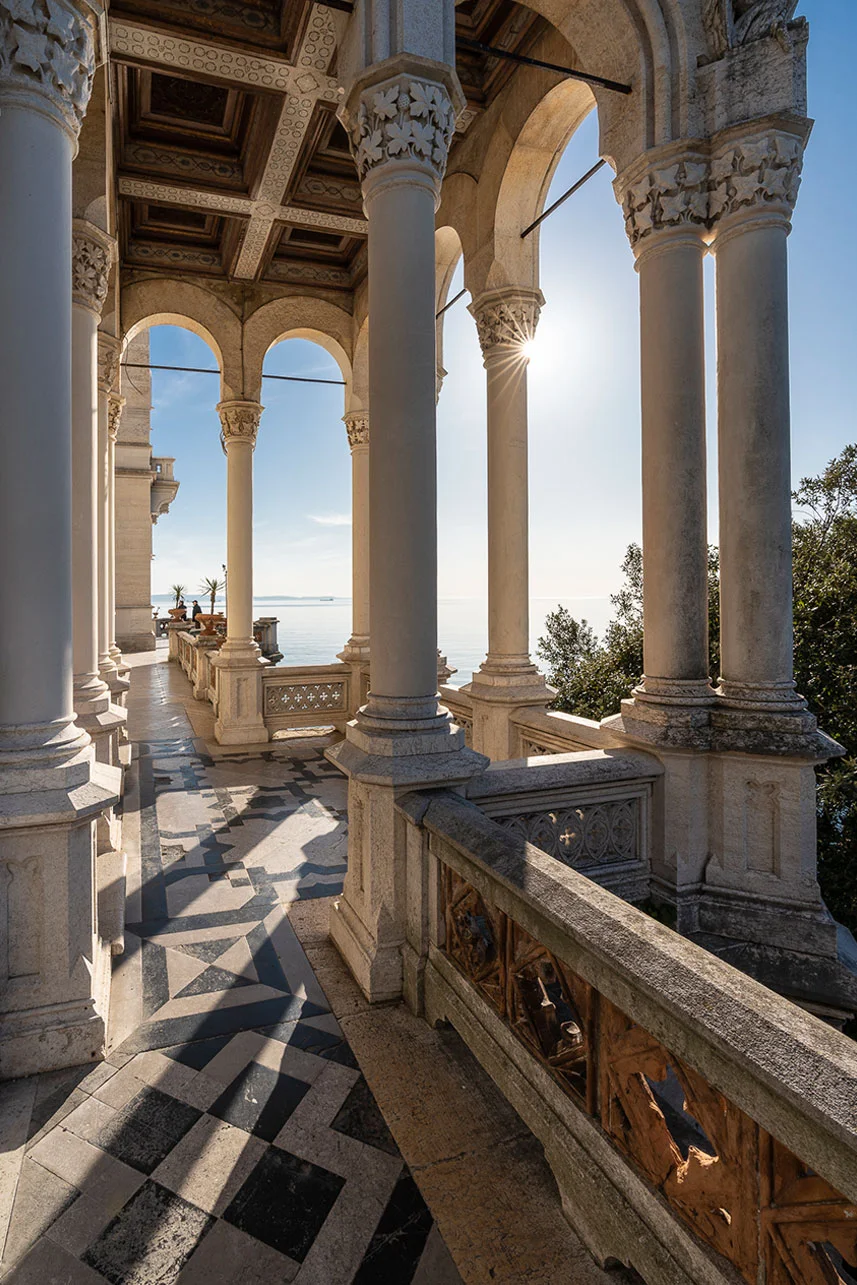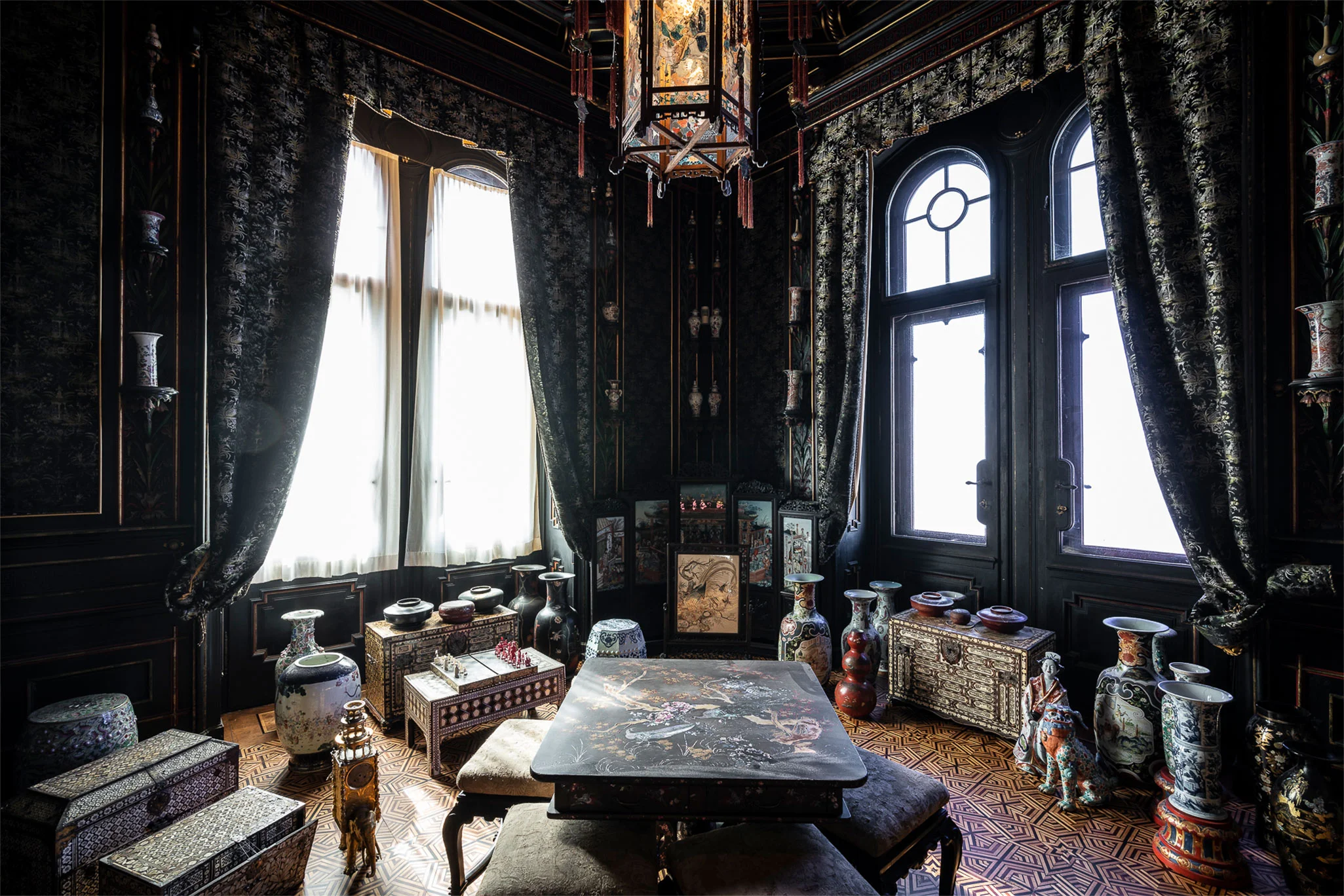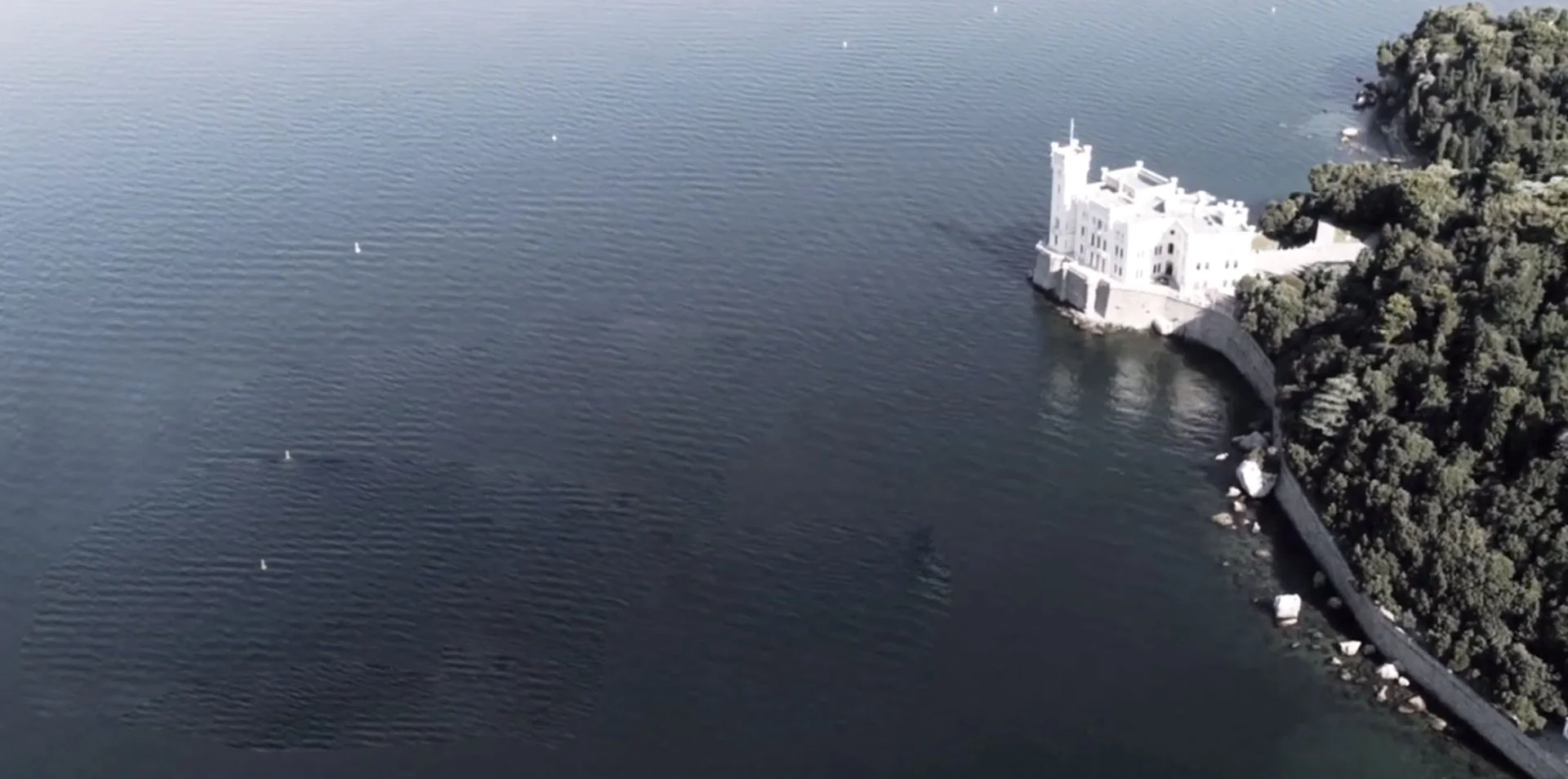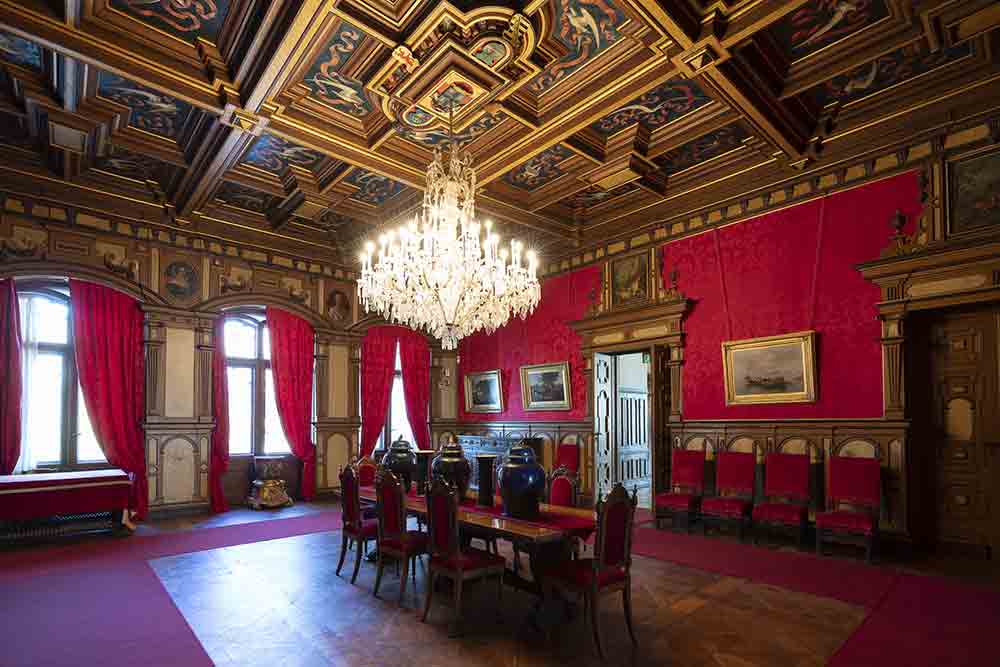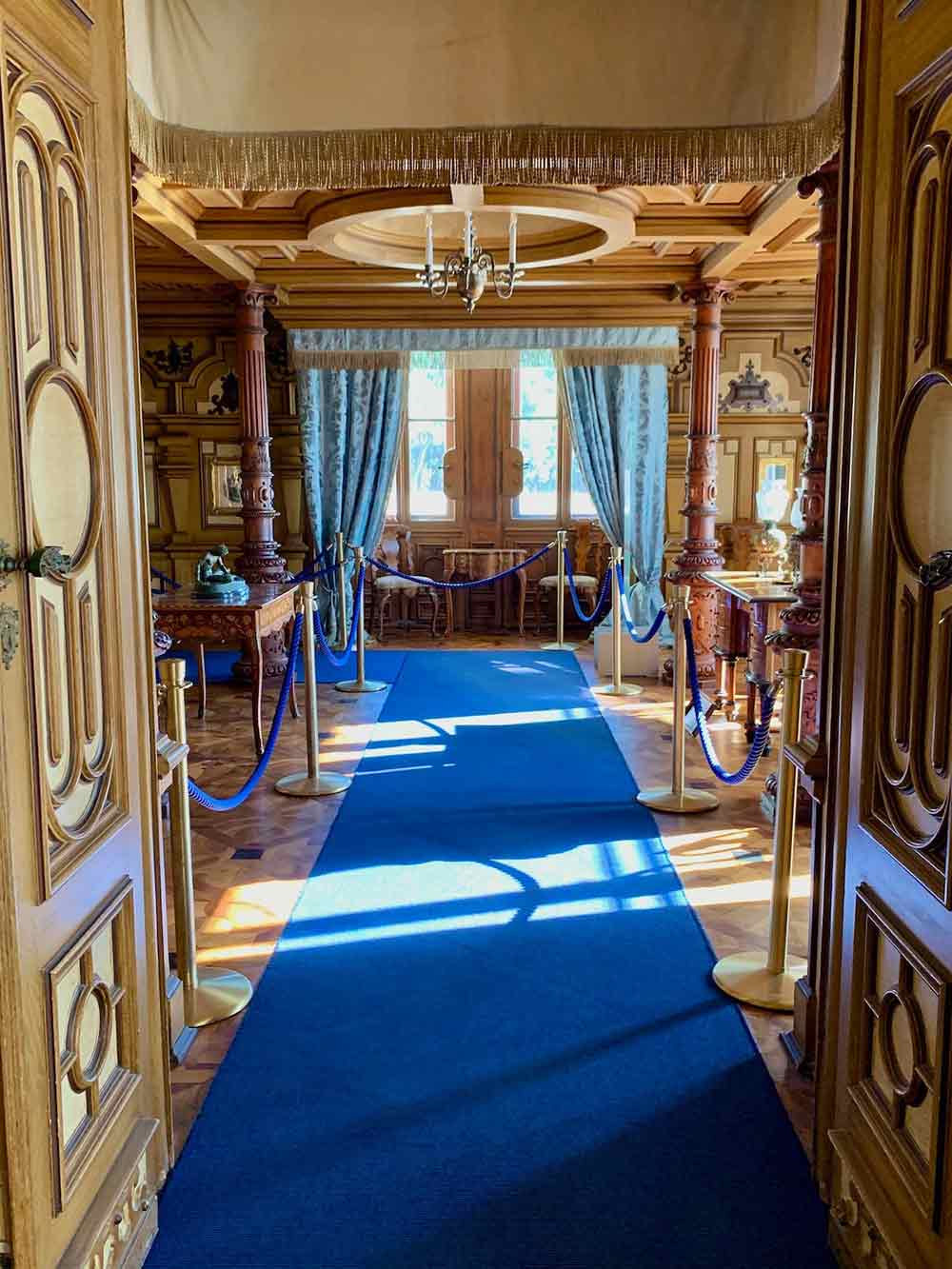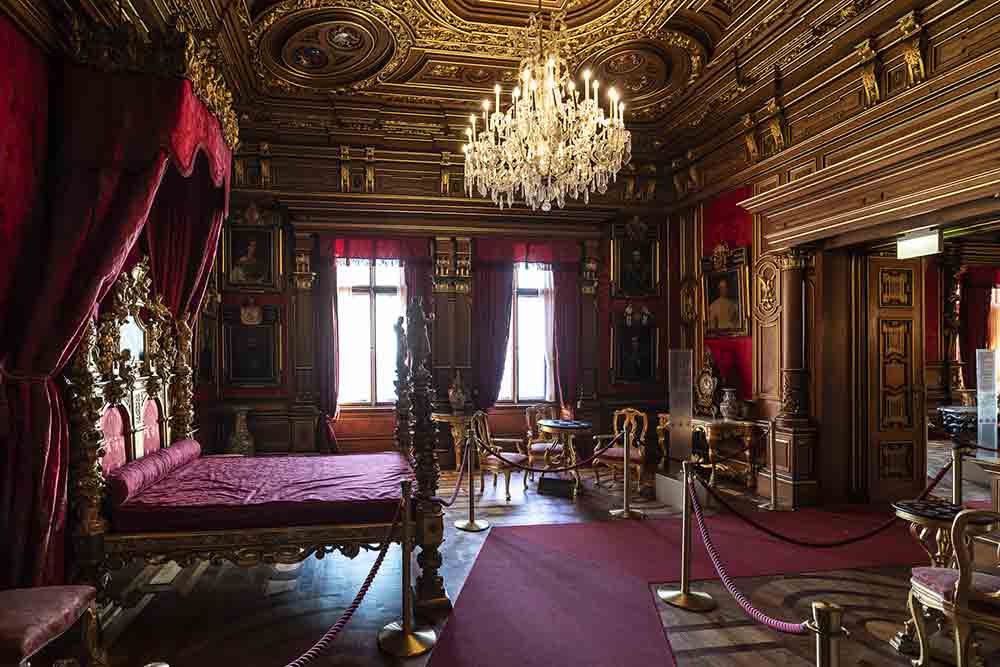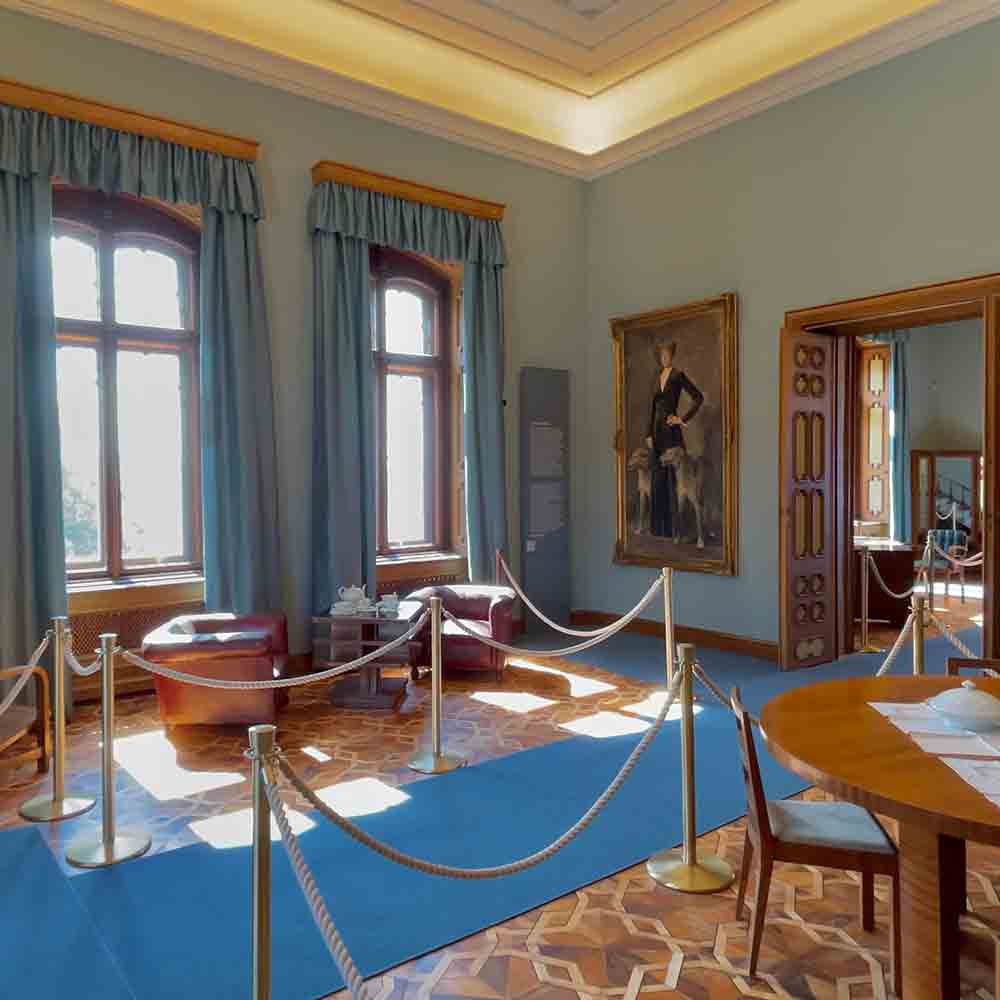The Castle of Miramare is an elegant ivory-white building that stands on the tip of the karst promontory of Grignano, 10 km from the city of Trieste.
Built in Istrian stone and an eclectic style, designed by Austrian engineer Carl Junker, the castle was constructed between 1856 and 1860 as the residence of Archduke Maximilian of Habsburg and his wife, Princess Charlotte of Belgium.
THE CASTLE
The Castle of Miramare and its Park were built at the behest of Archduke Maximilian of Habsburg, who decided, around 1855, to have a residence on the outskirts of Trieste that was befitting to his rank, overlooking the sea and surrounded by an extensive garden.
Fascinated by the impervious beauty of the promontory of Grignano, a sheer karst outcrop overlooking the sea, almost devoid of vegetation, Maximilian purchased several plots of land in the area in late 1855. The ceremony for the laying of the foundation stone of the castle took place on 1 March 1856. On Christmas Eve 1860, Maximilian and his wife, Charlotte of Belgium, moved into the castle on the first floor of the building whose exterior was completed at the date, while the interior was only partially finished, as works were still continuing on the second floor.
The castle, designed by Austrian engineer Carl Junker, is eclectic in style according to the architectural fashion of the time: gothic, medieval, and renaissance models are combined into a striking fusion and are echoed in the homes that in those very years the aristocracy had built for themselves in alpine landscapes on the banks of lakes and rivers.
In Miramare Castle, Maximilian accomplished a perfect synthesis of nature and art, Mediterranean scents and austere European forms, recreating an absolutely unique setting thanks to the presence of the sea, which dictated the choice of the colour blue of the tapestries on the first floor of the Castle, and inspired the names and furnishings of several rooms.
The interior design bears the signature of craftsmen Franz and Julius Hofmann:
the first floor, intended for Maximilian and Charlotte’s private apartments, has an intimate, homely atmosphere, while the second floor was the main floor, reserved for their guests who would be dazzled by the sumptuous decorations rich in coats of arms and red tapestries bearing imperial insignia.
Scopri il Museo
Un simbolo della Mitteleuropa aperto al mondo



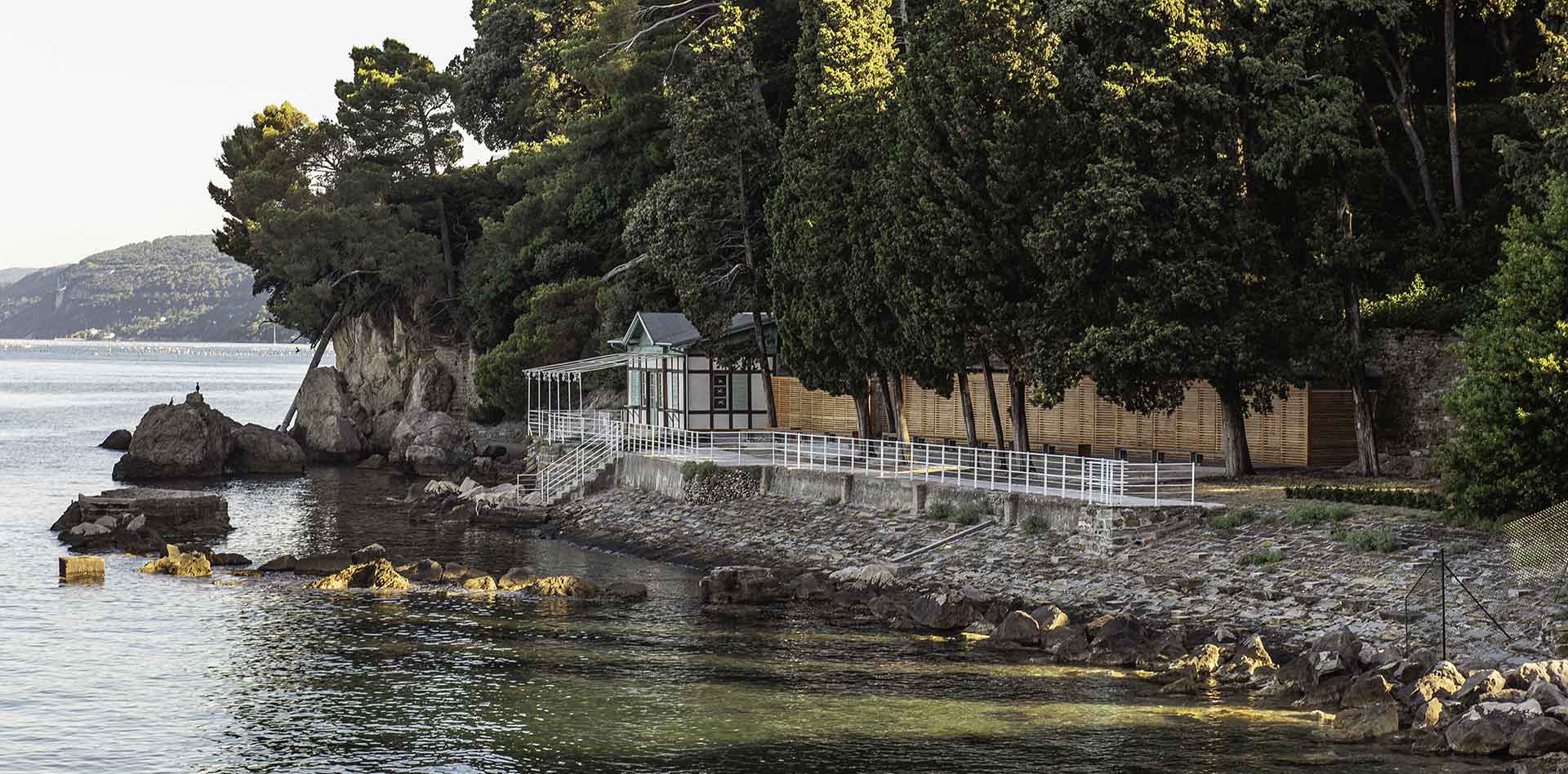
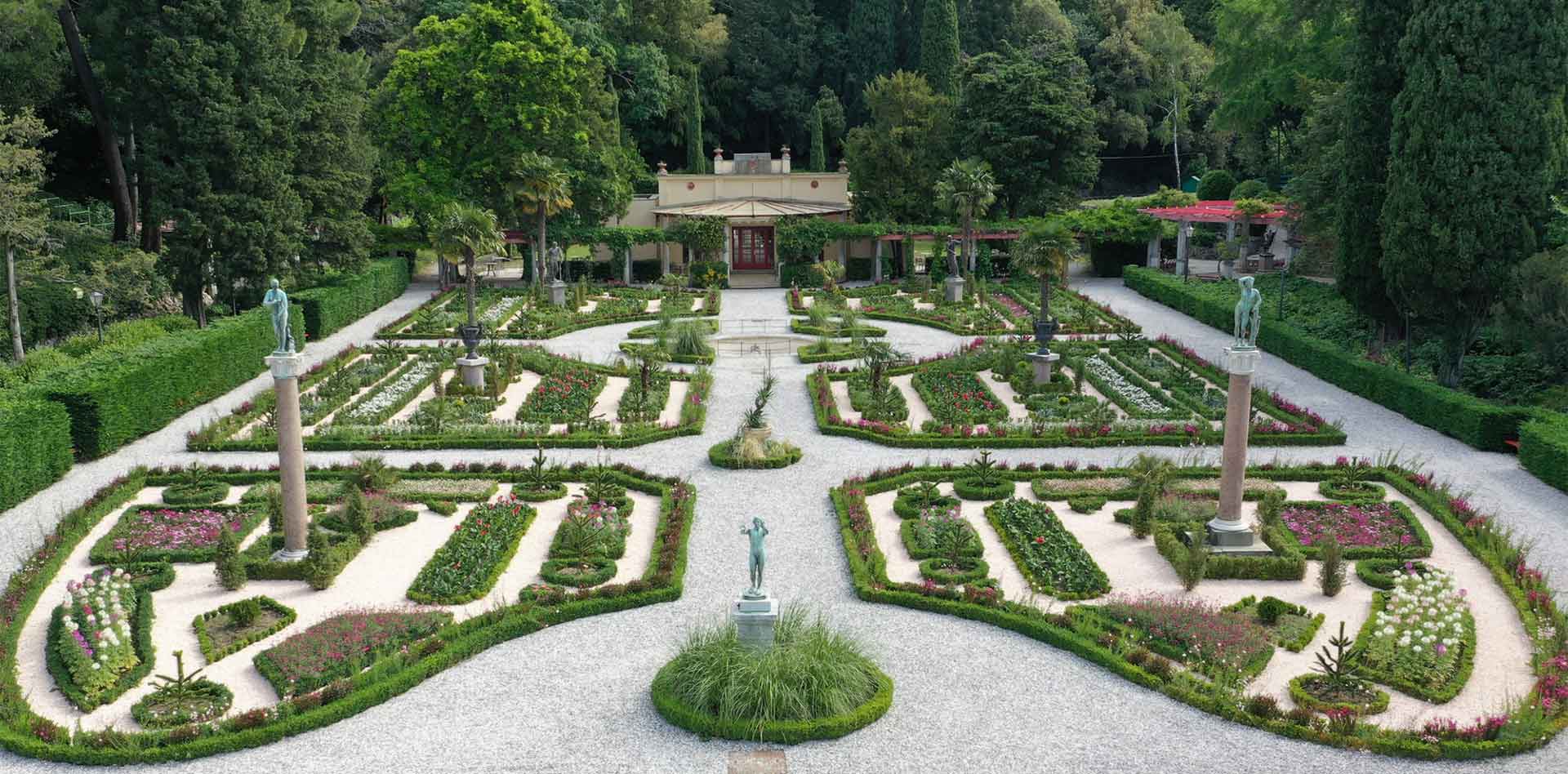
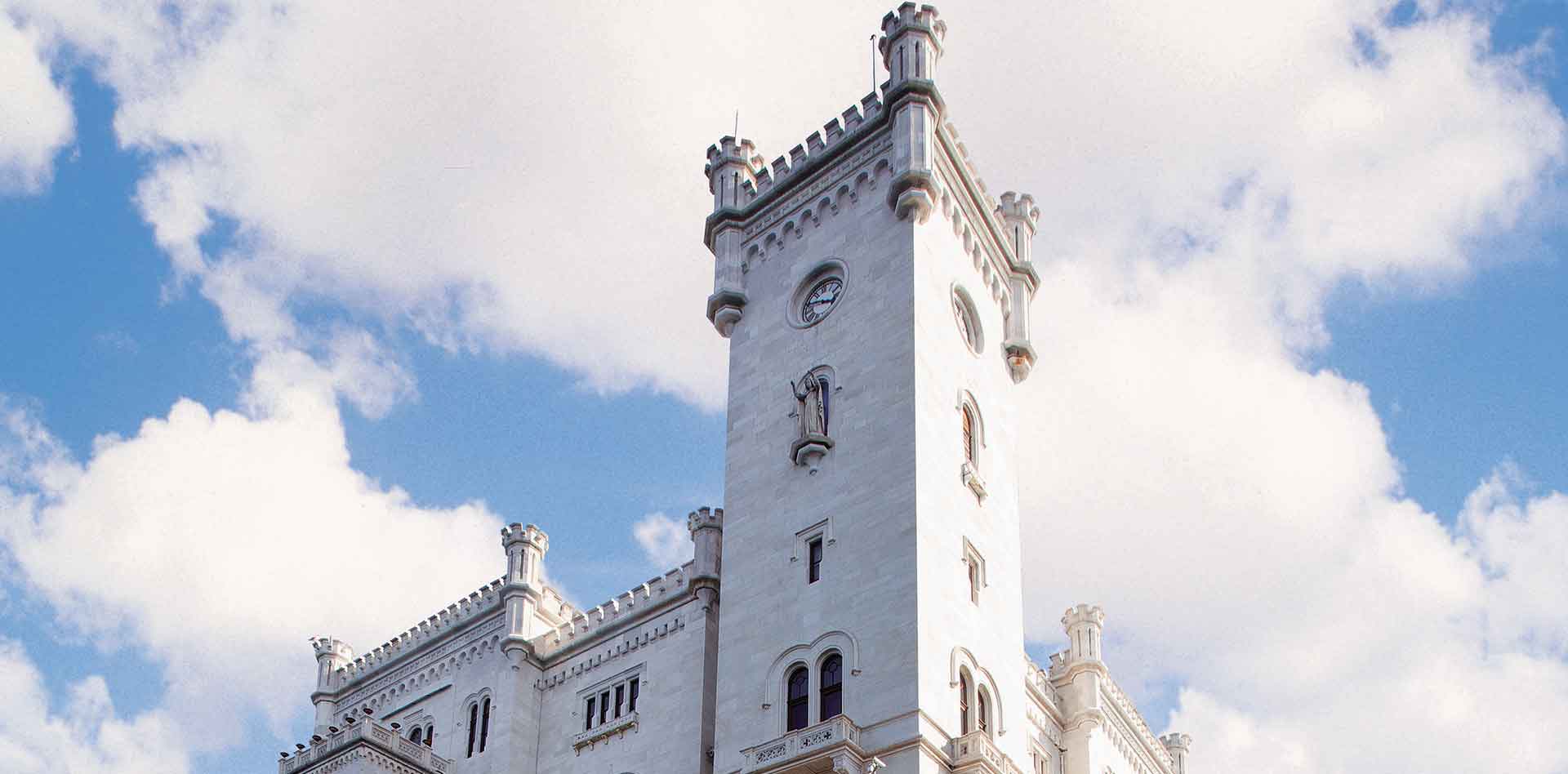


CASTLE

CASTLE
The Miramare Castle looks over the Gulf of Trieste, running out into the sea on top of a cliff. With its eclectic style and Istrian white stone, it is unmistakable no matter how you look at it
CASTELLETTO
CASTELLETTO
The chatelet is a scale-down reproduction of the eclectic exterior of the main residence….
STABLES

STABLES
Designed by engineer Carl Junker, the Stables were built between 1856 and 1860...
DUKE’S BATH

DUKE’S BATH
The beach hut of Duke Amedeo of Aosta overlooks the sea and offers a panoramic breath-taking view of the Castle.
PARK

PARK
The Park of Miramare is the result of the challenging work conducted over many years by Maximilian of Habsburg on the karst promontory of Grignano...
TORRETTA

TORRETTA
The turret overlooks the sea, offering a breath-taking view of the Gulf of Trieste …
KITCHENS

KITCHENS
The Castle's Historic Kitchens, located in the basement and overlooking the ‘porticciolo’ (small port), are currently under restoration...
GREENHOUSES

GREENHOUSES
Located near the Castelletto, the Greenhouses were intended for experimental botanical activities...

